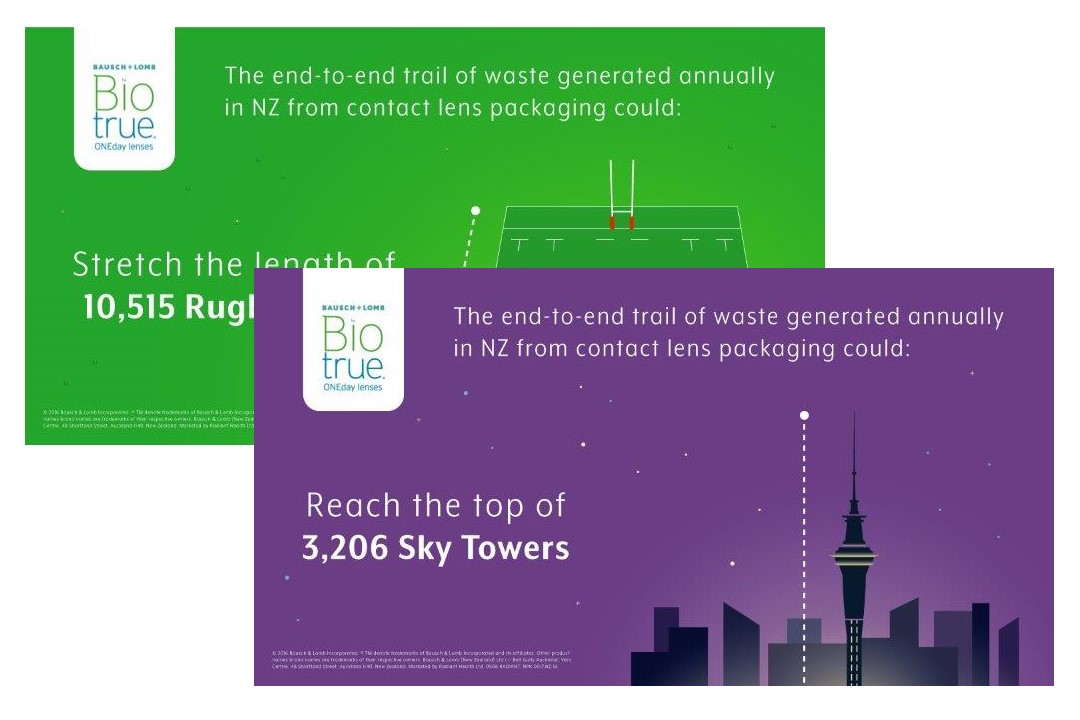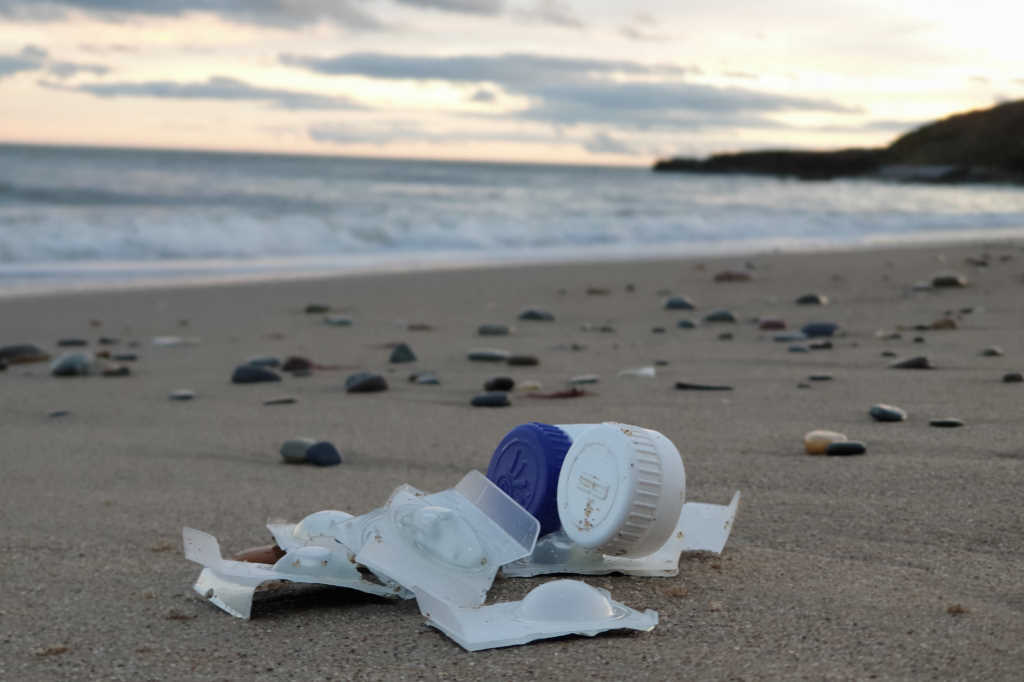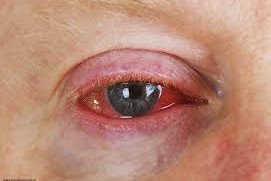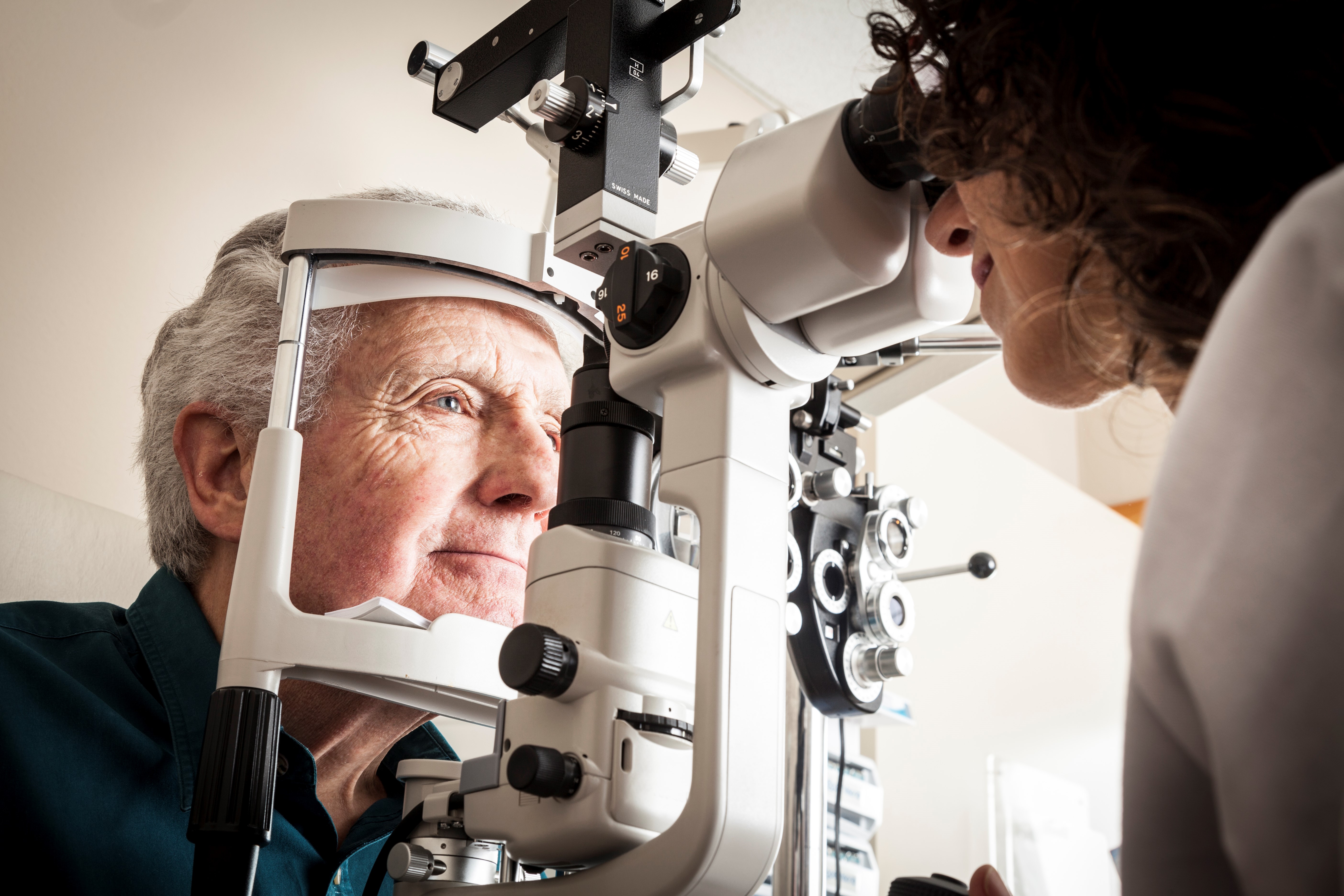How disposable are disposable contact lenses?
Ever since disposable lenses became a thing, Naomi Meltzer has wondered what impact this has had and is having on our environment. So she decided to find out.
In August 2019, Contact Lens Spectrum reported that in 2018, 35-46% of the USA’s 45 million contact lens wearers were daily disposable users¹. Of 400 contact lens wearers surveyed by Rolsky et al (2018), 19% discarded their used lenses into the toilet or sink². That’s an estimated 2.5 billion contact lenses (CLs) weighing nearly 20 tonnes entering wastewater treatment plants in the USA every year. In other research, when the five polymers commonly found in contact lens materials were exposed to the microbes found in biological wastewater treatment plants, the lenses fragmented, forming microplastics. That’s a lot of contact lenses in the stomachs of our sealife and our food chain.
Perhaps we should just cut out the middleman and eat our lenses when we’re done wearing them!
CL solutions
Increasingly, consumers are demanding answers and solutions, requiring manufacturers to be more accountable for the products and thus the waste they produce. But a quick review of the major CL suppliers seems to suggest they are more focused on the disposability of packaging, contact lens solutions, transportation and the waste caused during manufacturing than that generated by the CLs themselves.
So should we use fewer daily disposables? Rolsky et al proposed that the ecological waste of one-day disposable contact lenses is not that different from that of reusable contact lenses with contact lens solutions³. They calculated an annual supply (365 pairs) of one-day disposables – including cartons, blister packs and foil – produces 1kg of waste, versus 0.87kg with reusable lenses (though his team noted that this does not include the shipping carbon footprint to get the solution from the distributors to the retail stores). “With regard to the plastic waste of contact lens solution cases, one multipurpose solution contact lens case and one peroxide system contact lens case are equivalent to four- and eight-years’ worth of daily disposable lenses, respectively,” reported Rolsky et al. “The average plastic waste of one multipurpose solution or hydrogen peroxide solution bottle is equivalent to more than 2.5 years of daily disposable lenses.” While that calculation is relevant to the waste going into landfill, since cases are not flushed down the toilet, it does not help the discussion of wastewater contamination.
International recycling efforts
Founded in 2001, TerraCycle works with more than 100 major brands in 20 countries to collect used packaging and products that would otherwise be destined for landfill or incinerators. The waste is collected through TerraCycle’s recycling programmes, which fund schools, charities and non-profit organisations. The recycled materials are made into eco-friendly items such as fence posts and park benches. In our industry, the company collaborates with Johnson & Johnson UK, CooperVision and Bausch+Lomb to recycle blister packs and foil.
However, the sorting of plastics makes recycling them time- and cost-intensive. Research is ongoing into chemical recycling of materials, which requires less energy and can combine mixed plastics, but the emphasis is now on new biodegradable plastics made from fructose-like light-sensitive molecules. After three hours of UV light exposure, these polymers break down into a liquid that can be used to make more plastic. Good for packaging, perhaps, but not ideal for contact lenses!
Other innovators are using itaconic acid derived from the fungus Aspergillus terreus to make carpets, paints, plastics, coatings and synthetic rubber, as well as a hardening agent in organosiloxanes for use in contact lenses. According to Lukasiak et al’s Biopolymers - Multivolume Handbook (2002), organosiloxanes are biodegradable, but only if treated with specific bacteria in an ‘activated sludge’. While still another research area is focused on packaging plastics produced using sustainably sourced sugarcane.
The local situation
While a genuinely biodegradable lens seems a little way off, a pillar of the global effort to reduce waste is consumer education, an area in which Bausch + Lomb is proactive. Yvette Beattie, Bausch + Lomb’s New Zealand key account manager, described its recycling programme with recycling bins displayed in customers’ practices. “Patients can recycle any brand of contact lens, including the blister, the foil and the lens itself. We provide the bin and pick it up, along with providing resources to assist the practice in promoting this.” Bausch + Lomb commissions TerraCycle in Australia to extrude the collected plastics and put them into watering cans, park benches and garden beds, she said, adding the company’s solution bottles and cartons are also 100% recyclable.

Bausch + Lomb is promoting recycling
CooperVision does not have a contact lens recycling programme in Australia or New Zealand; its primary focus has been sustainability in its manufacturing plants, it says, netting several international awards for the design and operation of its European and Puerto Rican manufacturing facilities. The company does, however, advise CL wearers not to dispose of their contact lenses into drainage systems, recommending they follow the guidance of their local government authority for disposal. (I was unable to find mention of contact lenses on the Auckland Council’s online recycling page, however. The closest I got was ‘condoms’, which we’re advised to put into a rubbish bin!)
Alcon claims its packaging is 86% recyclable, including the box and blister “in most countries”. In 2020, internationally, it recycled approximately 77% of its operational waste, it said. Christchurch-based Corneal Lens Corporation (CLC) does not manufacture disposable lenses, but its director Graeme Curtis acknowledged the issue of manufacturing and packaging waste. CLC now ships lenses in a recyclable plastic blister pack rather than the thick plastic rigid gas-permeable cases previously used, which Curtis said dropped the footprint of wastage hugely. CLC’s production laboratory now uses water-soluble wax, eliminating the need for 95% of the solvents they previously used. Curtis also referred to the Menicon initiative of a foil-on-foil flatpack instead of the traditional foil-on-polypropylene blister packs. The entire pack and production waste is recycled to make the beds the lenses sit on.
Australian speciality lens manufacturer Gelflex is less into disposables but uses recyclable plastic blister cups for its packaging. All the plastic moulds used in manufacturing are collected and recycled by third-party contractors for use in other products, the company said, while its Perth office is a registered drop-off point with TerraCycle for those wishing to dispose of their lenses and packaging in Australia.
It is good to see contact lens manufacturers making efforts to recycle and engage in ecofriendly initiatives, but the basic answer to the question of where do our disposable lenses end up is: the sea. Our best hope is to continue to better educate consumers to stop flushing them down the loo and return them where they can for recycling into non-optical products.
References
- https://www.clspectrum.com/issues/2019/august-2019/the-environmental-impact-of-contact-lens-waste
- Rolsky C, Kelkar V, Halden RU. The environmental cost of contact lenses. Presented at a meeting of the American Chemical Society, Boston, Aug. 2018.
- Rolsky C, Halden R, Kelkar V. Chemical and physical changes in a variety of contact lenses during the wastewater treatment processes. Presented at the meeting of the American Chemical Society, Boston, Aug. 2018.

Naomi Meltzer has worked in optometry for more than 30 years and runs an independent practice in Auckland specialising in low-vision consultancy. She is a regular contributor to NZ Optics.
























